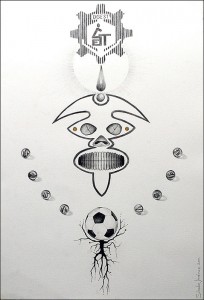What to do with latex paint that I never intend to use again? That’s the question I faced with a half-empty gallon of Tea Light, an unremarkable hue from Benjamin Moore, occupying a square foot of space in my cramped basement.
I’m not sure what I ever saw in Tea Light. Even on the sunniest days, it has a gloomy cast about it. Honestly, getting its remaining ounces out of the house had less to do with clearing up space and more to do with expunging the memory of it ever appearing on my guest bathroom’s walls (it was quickly covered over with Hawthorne Yellow).
As much as I loathed Tea Light, I wanted to dispose of it in an eco-responsible manner. So I Googled my way to a solution: line a cardboard box with plastic and pour a thin layer of paint in the box; after it dries, add another thin layer; repeat until the can is empty, and then throw out the paint-caked box.
I should have paid greater attention to the “thin” part of the process. My first layer was far too thick and took more than a week to dry. Around day three of the drying process, I took the photo shown here. Though I was frustrated by the painstakingly long time it took this layer of Tea Light to dry, I found the unmixed, semi-dry paint to be far more aesthetically appealing — artful, even — than the well-stirred and carefully applied paint that I’d once applied to my bathroom’s walls.



